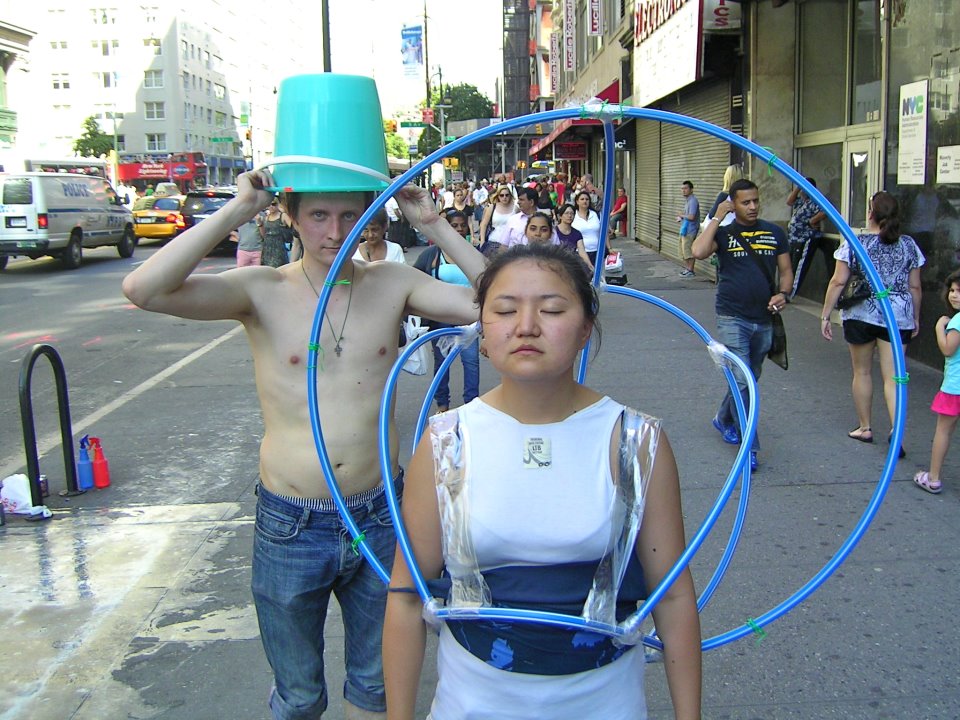
In what AiOP is fondly calling “The Russian Invasion,” Art in Odd Places and CEC ArtsLink hosted five Russian and two Central Asian visiting artists for a public art workshop on Saturday, June 23. The artists created spontaneous public performances along 14th Street between Fifth and Sixth Avenues, working with the AiOP 2012 theme: MODEL. All the materials used to create the performances were purchased and/or found along this block and constructed in only a few hours.
In our endeavor to unite citizens of “The Model Runway” around the world, Art in Odd Places was delighted to partner with CEC ArtsLink for a one-of-a-kind workshop dedicated to opening up new avenues of expression in public spaces.
What made this particular workshop, held on June 23 along 14th Street, so special was the fact that many of the visiting artists involved had never put together a street art performance before. And yet, each project emanated its own unique charm, prompting many passersby along 14th Street to stop and enjoy the spectacle.
This workshop, facilitated by CEC ArtsLink and created by Art in Odd Places founder Ed Woodham, was part of a 10-day journey for five artists from Russia and two artists from Central Asia to learn about public art practices in New York City. For a crash course in street performance, each artist was tasked with the challenge of using $25 worth of materials to create a public performance. From concept to realization, the artists only had a few hours to put everything together and hit 14th Street.
“They don’t have much access to contemporary art,” says Program Director of CEC ArtsLink, Susan Katz, of the visiting artists. “Public art practice in particular is quite new in their countries. It’s really important for them to have this opportunity to go to museums, galleries, see art on the streets …”
According to Katz, in the artists’ native countries, there are so few initiatives to do public art. Thus, learning about organizations in the U.S, including the government, that are supporting public art, is crucial to their development as artists.
Such is the mission behind CEC ArtsLink: a non-profit organization with a 50 year legacy in the cultural exchange of art and artists around the globe. According to their site, CEC ArtsLink promotes international communication and understanding through collaborative, innovative arts projects for mutual benefit.
Here’s a brief look at what our inspiring visiting artists were able to put together in a matter of hours … the projects that brought so many native New Yorkers along 14th Street a bit of spontaneity and surprise on a sunny Saturday afternoon.

Nargiz Chynalieva, Bishkek, Kyrgyzstan – “Informational Strata”
The Project: We are all surrounded by various types of information, i.e. advertising, entertainment, news, public opinion, which attempts to influence our actions and thoughts. In this work, the artist is trying to free herself of these layers of information. –Nargiz Chynalieva.
AiOP: What does this project mean to you?
Chynalieva: The meaning of the circles is that everyday–in New York, in Bishkek, and all around the world–people feel pressure because of a lot of information, to which they are connected. This information is a tool of a whole system, a world system, and this world system uses information to manage us. In my performance, this person will throw it away and try to be free from this influence.
AiOP: What interests you about public art?
Chynalieva: It’s really interesting to communicate with [an] audience –not in the gallery territory, where you feel walls, special atmosphere … people are ready to accept art. I guess it’s interesting when people are not ready for art, but art is near them.
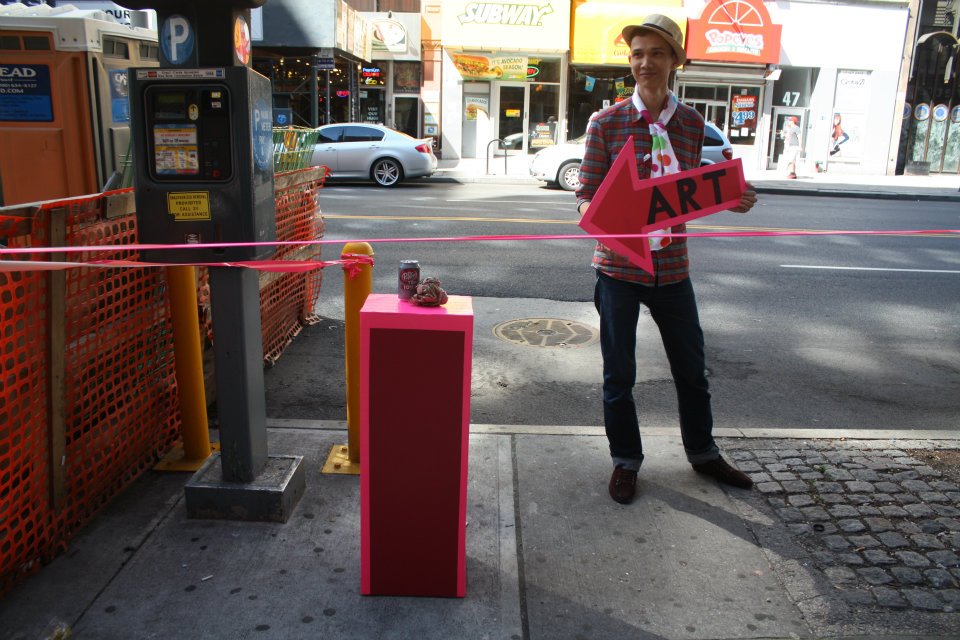
Zafar Nabiev, Tashkent, Uzbekistan -“This is Art”
The Project: Today, there are many artists, but some of them make garbage, which they call art. I will create an exhibition out of trash, but will tell people passing by that it is art. It will be interesting to see who believes me and who doesn’t. — Zafar Nabiev
AiOP: What does this project mean to you?
Nabiev: This is a pedestal for art. The reason why I do it is because now days, [there’s] a lot of art around the world. Actually, not all who are doing art, [make] art. It’s kind of junk. With this project, I’ll put this pedestal on the street and put anything … I’ll say it’s art … fine art. So beautiful. I’ll try to understand what people think … if they believe. It’s a joke because now this is so hard, especially if people don’t know much about modern art.
AiOP: What interests you about public art?
Nabiev: I think you can speak with people honestly. I think it’s honest art.
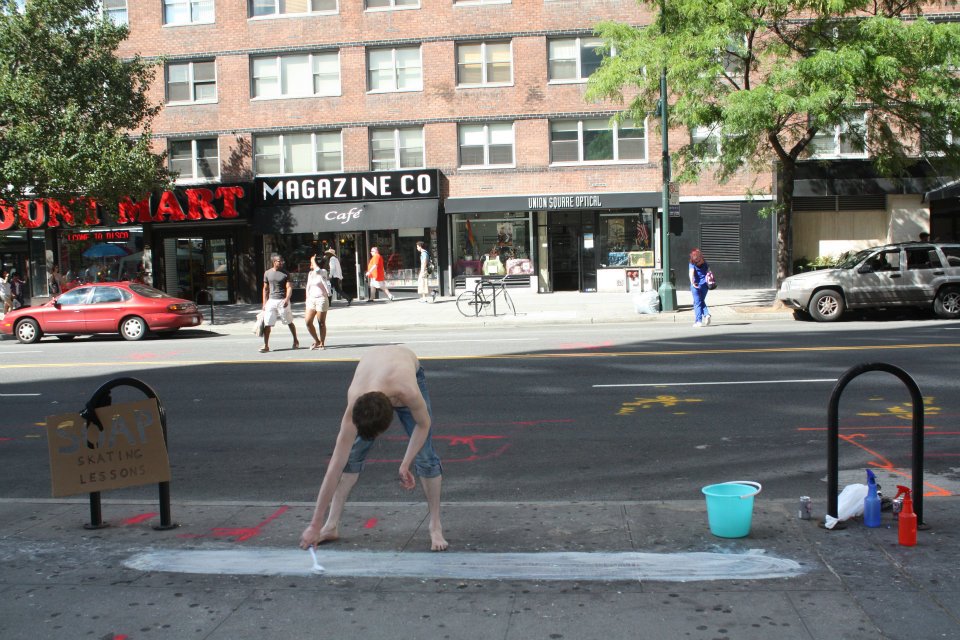
Semyon Motalianets, St. Petersburg, Russia – “Skating Rink”
The Project: I will rub soap on the asphalt sidewalk in the form of a stretched-out path. I will wet soap from a pulverizer and begin to skate as a person skates in winter on the ice. I will skate barefoot in jeans rolled up to the knee. The skating zone will be marked.– Semyon Motalianets
AiOP: What does this project mean to you?
Motalianets: I don’t have money and time to go to a real skating rink. I built this skating rink with soap in my kitchen … a small kitchen. We performed this in Moscow and it was for people who were poor and don’t have money for skating. This sport is very expensive. But I think and my friends think, why not do it in our house?
AiOP: What interests you about public art?
Motalianets: It’s funny. It’s contemporary … My art is not “smart art.”
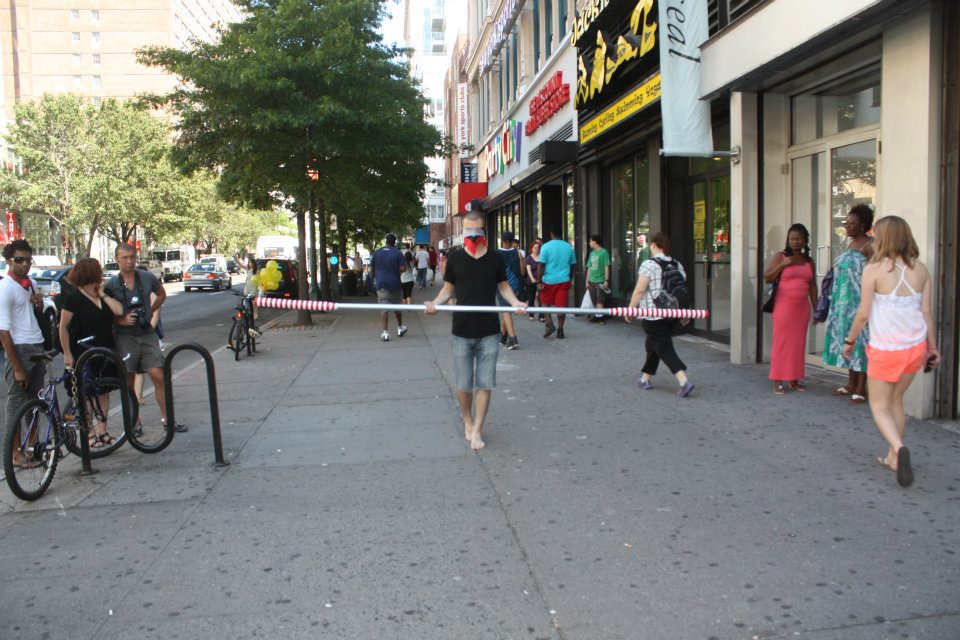
Tima Radya, Yekaterinburg, Russia – “The 14th Line”
The Project: A tightrope walker moves along an imaginary line … delineating the sidewalk tiles.– Tima Radya
AiOP: What does this project mean to you?
Radya: I’ll be a “man on wire.” But my wire is imagined. It’s a line on the street. I’m trying to find ground under my feet.
AiOP: What interests you about public art?
Radya: It was always my dream. Now we are doing it. Performance is not so popular in Russia because people in my city, they aren’t angry … but they are serious.
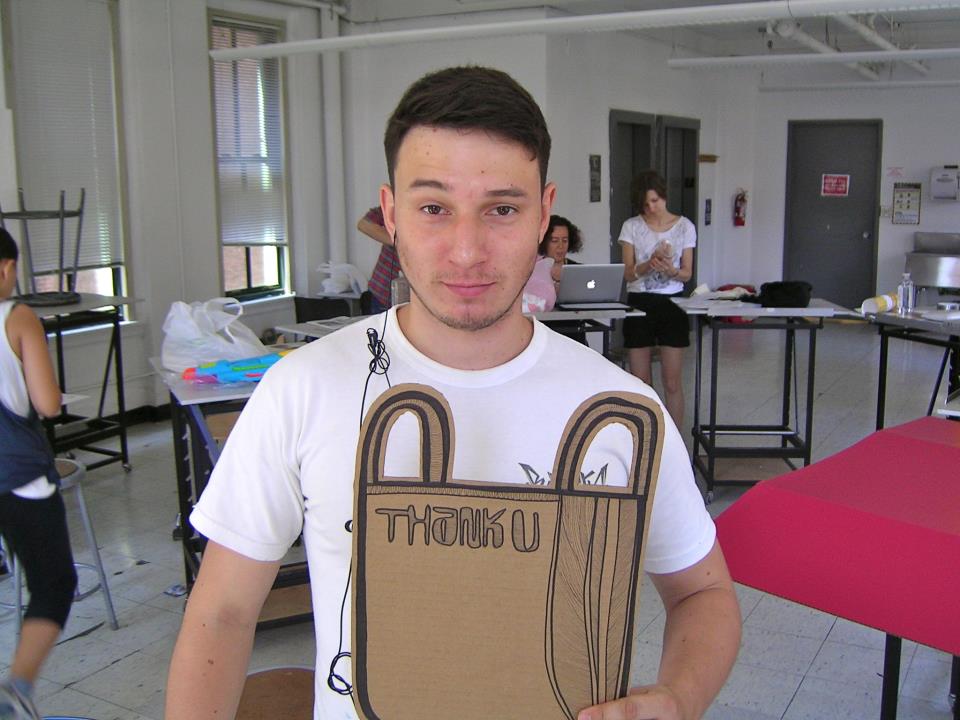
Felix Mashkov, Vladivostok, Russia – ” Gratitude to the Invisible Man.”
The Project: I will make cardboard stencils expressing gratitude to sanitation worker. I will ask people to sign their name on the stickers, expressing their appreciation. Then, I will attach these stickers to the trash bags, which lay on 14th Street. When the sanitation workers pick up these bags, they will be pleased. — Felix Mashkov
AiOP: What does this project mean to you?
Mashkov: If public art is such a social thing, I should think about those people who are not very touched by society. New York has such an interesting feature … your sanitation service does everything at night and you probably never see them during the day. While you are sleeping, the rubbish just disappears. This job is hard, and I thought it would be fun to make something that will surprise them because this job is extremely … routine.

Vadim Gerasimenko, Vladivostok, Russia – “Water Man”
The Project: Using water, (instead of money) I will attempt to ride in a taxi from point A to point B. Water Man –the Lord of the Water. Can water replace money? How is the exchange system among people structured? — Vadim Gerasimenko
AiOP: What does this project mean to you?
Gerasimenko: In Russia, you could actually get somewhere in a car for free or for a bottle of water. It was really interesting to see people buying water everywhere … water’s become a sort of currency in New York. I wanted to see how people would react to me saying, “I don’t have any money, but can you take me somewhere.”
AiOP: What interests you about public art?
Gerasimenko: This is the first time I’ve done a performance. Felix and I work as a team, and our work is very different. But I was interested, when it was suggested we do a performance, to give it a try.

Olga Zovskaya, Moscow, Russia – “The Dots”
The Project: I will put M&Ms in the line on the street and it will [leave] signs of my steps. — Olga Zovskaya
AiOP: What does this project mean to you?
Zovskaya: It’s a project about memory … about the things we remember and leave.
AiOP: What interests you about public art?
Zovskaya: I can communicate with people and my project can communicate with space.
For more pictures from the workshop, check out our Facebook photo album. Or find “artinoddplaces” on Instagram!

